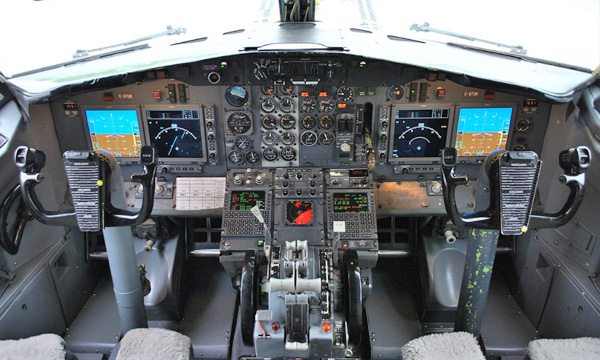Nolinor Aviation gives new life to its Boeing 737-200 fleet |
| Romain Guillot |
|
|
05 JUL 2018 | 285 words
|
 |
© Nolinor Aviation |
|
|
|
We can't say it often enough. A well-monitored and correctly-maintained aircraft can fly forever. The Canadian operator Nolinor Aviation understands this and has decided to modernise the avionics for its fleet of venerable Boeing 737-200 aircraft. The idea is to ensure that equipment is reliable and to minimise delays due to failures of the electro-mechanical and analogue equipment specific to this type of plane, which was designed at the end of the 1960s.
The Canadian operator has begun modernising the flight decks of its 10 Boeing 737-200s manufactured between 1974 and 1984 for a total investment of 10 million Canadian dollars (6.5 million Euro) over a 5 to 6-year period.
A first aircraft has already been modified (C-GTUK) with all of its all electromechanical navigational and flight instruments replaced with four active matrix LCD colour screens with LED back-lighting provided by Universal Avionics (EFI-890R), a world first. These screens alone replace over fifteen electro-mechanical instruments (airspeed indicator, altimeter, horizon, vario, HSI, emergency instruments and so on).
The two inertial gyroscope units have also been replaced with solid-state inertial navigation systems (Honeywell Laseref V). The FMS have also been replaced with UNS-1Lws from Universal Avionics and are obviously compatible with NextGen. Nolinor Aviation has also specified that the transponders had been upgraded to meet the latest ADS-B Out requirements.
The Canadian operator has also announced that this modernisation also increases the stability of navigation instruments in remote regions, as Nolinor regularly flies in the Arctic, while complying with US regulations which will soon be in force in Canada. It will also reduce the amount of time required for maintenance troubleshooting thanks to the self-diagnostic capacity of the on-board systems.
|
|
 |
Romain Guillot
Chief editor
Cofounder of Journal de l'Aviation and Alertavia
|
|
| |
They made this section possible |
|
|
|
|
|
|
|
|
|
|
|
|
|
|
|
|
Top stories |
|
|
|
|
|
Top stories
|